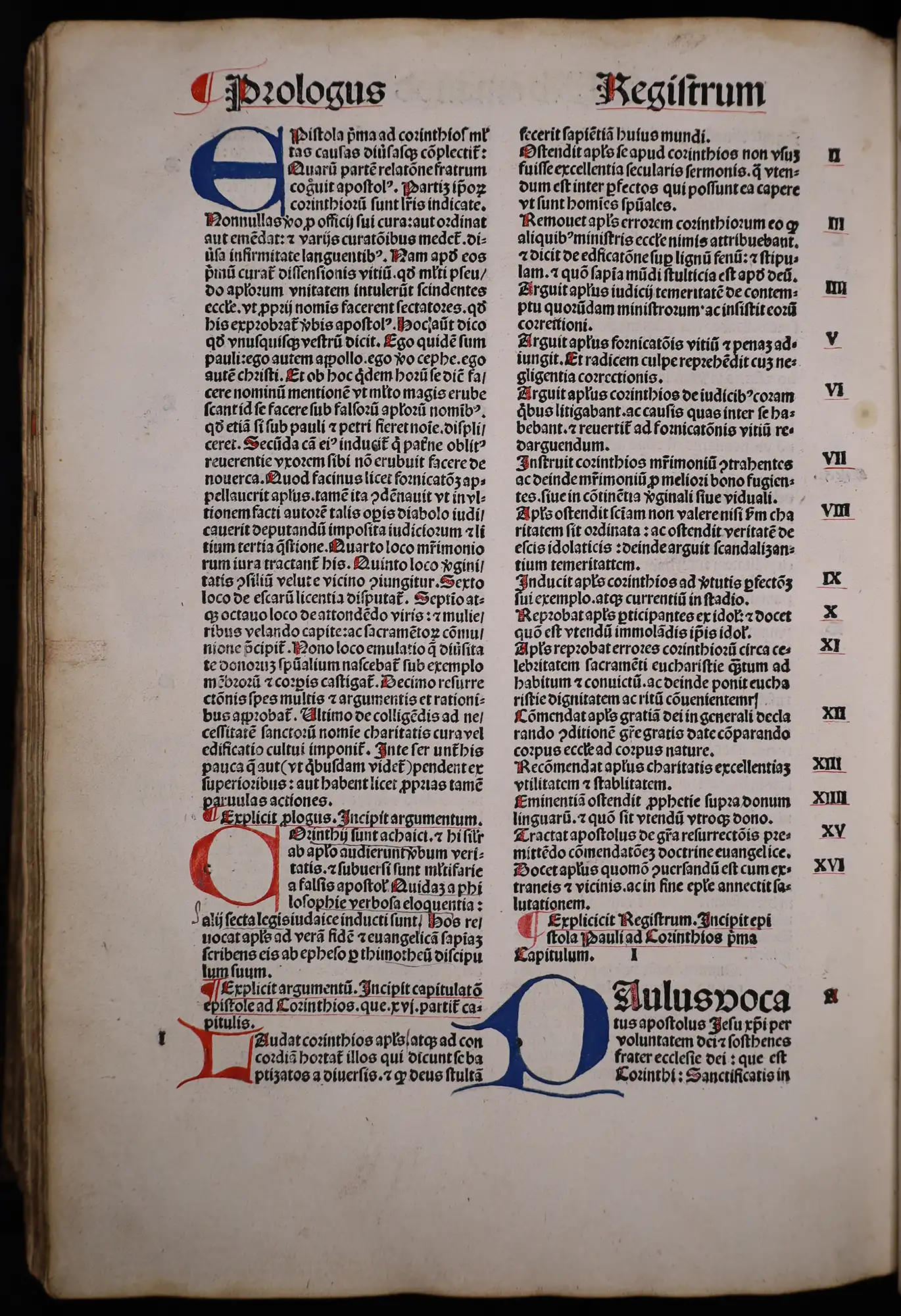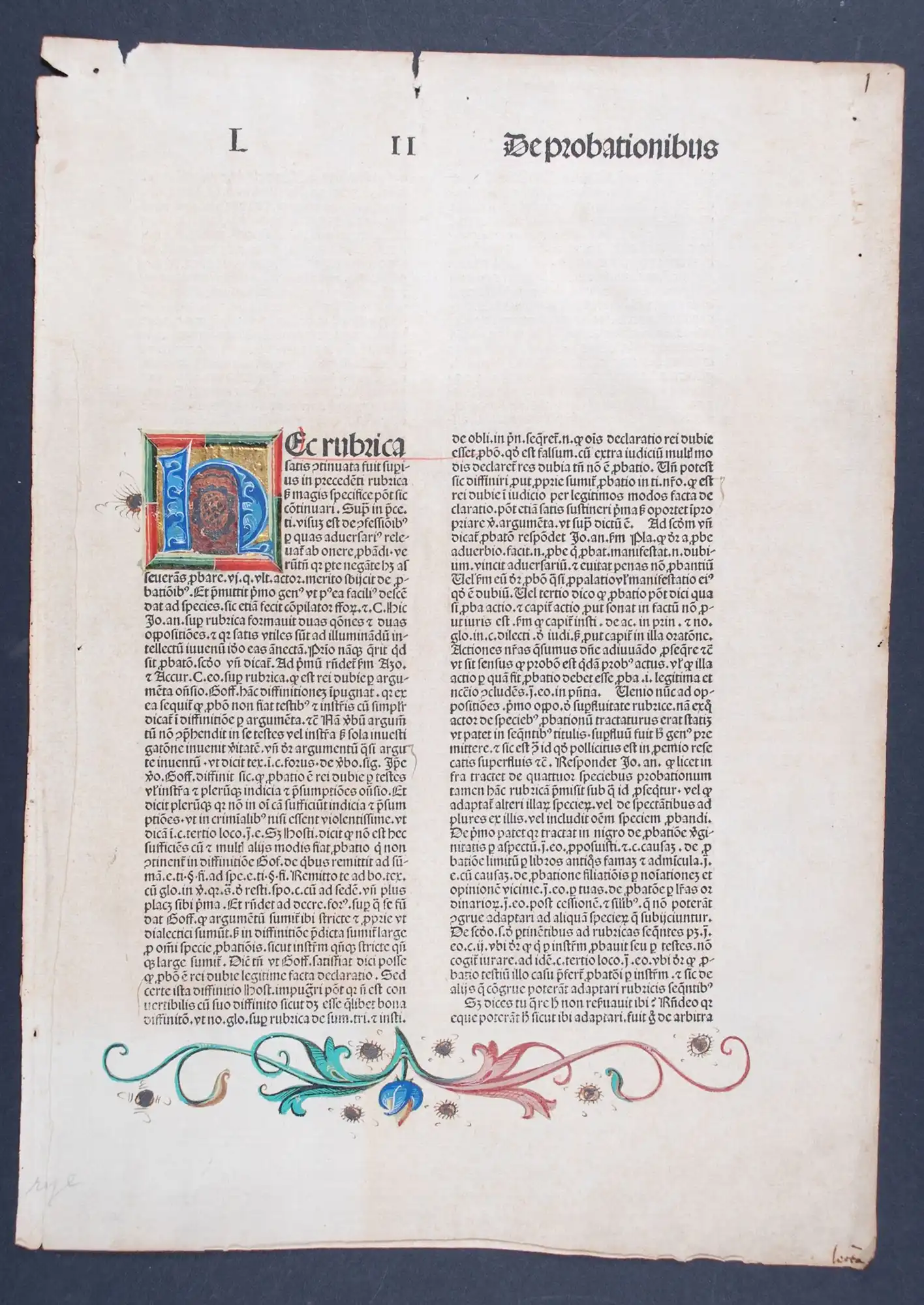Case 8
- Basel

Niccolò de' Tudeschi. Lectura super V libris Decretalium. Basel: Johann Amerbach, 1488. Single leaf.
The town of Basel earned its fame as a centre of printing through the high quality of its scholarly output. Prominent among its early printers was Johann Amerbach (ca. 1444-1513) who set up his press in 1477. A pupil of Johann Heynlin of the Sorbonne, Amerbach made his press the vehicle for the Christian humanism of his teacher. His work is characteristically printed with taste and edited with care and accuracy.
The Reed Collection includes a Vulgate Bible from Amerbach’s press, and three individual leaves including this fragment from the Lectura of Archbishop Nicholas de Tudeschis (Bishop of Palermo 1386-1445). This work is a five-volume commentary on the Decretals of Gregory IX. The text is from the second book, the section De probationibus (Concerning Evidence). The floral decoration and illuminated initial (on a ground of gold leaf) have been painted by hand.

Niccolò de' Tudeschi. Lectura super V libris Decretalium. Basel: Johann Amerbach, 1488. Single leaf.
Open image in new window

Bible. Latin Vulgate. Basel: Nicolaus Kesler, 1491.
Nicolaus Kesler (d. 1519) was initially employed as a bookseller by the printer Bernard Richel whom he succeeded in business. Kesler’s shop printed more than seventy titles including Bibles, liturgical works and two editions of the Legenda aurea. He remained active in the printing trade into the sixteenth century. Kesler produced his first Vulgate Bible in 1487; displayed here is his second printing of 1491.
Basel printers played a key part in developing the Bible by supplementing it with material facilitating its use for study. For example, Amerbach placed a note on the contents of each chapter in front of each Gospel (he called these registra); Kesler extended these to all works in the New Testament, calling them capitulationes (see ‘Incipit capitulatō’, six lines from bottom of the first column). He also added a note on the translators and interpreters of the Bible. Such details demonstrate that early printers were aware of what their competitors produced, and that the addition of useful features could give an advantage in the competitive market.

